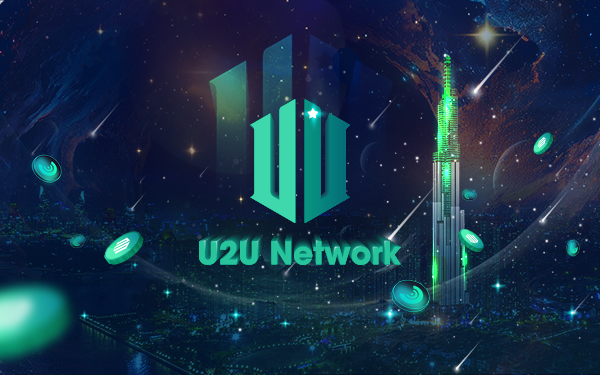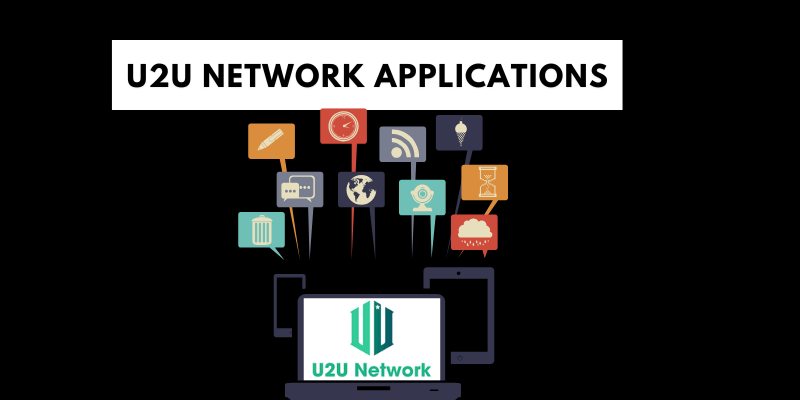U2U Network Applications: Revolutionizing Decentralized Infrastructure
The blockchain landscape is undergoing a transformative shift, with innovative platforms like the U2U Network leading the charge. Built on a Directed Acyclic Graph (DAG) architecture and boasting Ethereum Virtual Machine (EVM) compatibility, the U2U Network is redefining how decentralized applications (dApps) interact with real-world use cases. At its core, U2U Network applications are designed to address the scalability, security, and interoperability challenges that have long plagued traditional blockchain systems. This article explores the multifaceted ecosystem of U2U Network applications, their unique value propositions, and their potential to reshape industries through Decentralized Physical Infrastructure Networks (DePIN).
Contents
The Foundation of U2U Network Applications
U2U Network applications are powered by a modular Layer 1 blockchain that integrates DAG technology with the Helios Consensus protocol, achieving up to 17,000 transactions per second (TPS) per shard and a transaction finality time of 650 milliseconds. This high-performance infrastructure is tailored for DePIN, enabling seamless integration of physical assets with decentralized networks. The network’s subnet architecture allows developers to create customized, independent sub-networks, each inheriting the security and consensus mechanisms of the U2U mainnet. This modularity is a game-changer, as it ensures that U2U Network applications can scale without compromising efficiency or security.

The U2U Network’s EVM compatibility further enhances its appeal, allowing developers to deploy existing Ethereum-based dApps while leveraging U2U’s superior performance and lower costs. By supporting programming languages such as Python, Go, Rust, and TypeScript, U2U Network applications are accessible to both Web2 and Web3 developers, fostering a vibrant ecosystem of over 80 dApps and more than 1 million users as of October 2024.
Key U2U Network Applications
Decentralized VPN (U2DPN)
One of the flagship U2U Network applications is the U2U Decentralized VPN (U2DPN), which has attracted over 60,000 users globally. U2DPN transforms ordinary devices into contributing nodes, enabling users to share bandwidth and earn passive income while enhancing online privacy. By reducing reliance on centralized VPN providers, this application exemplifies how U2U Network applications bridge the gap between blockchain technology and everyday utility. With over 155,000 downloads and 9,000 daily active users within three months of its launch, U2DPN is a benchmark for DePIN innovation.
Internet of Things (IoT) and Artificial Intelligence
U2U Network applications extend into high-demand sectors like IoT and AI, where scalability and low latency are critical. The network’s ability to process thousands of microtransactions per second makes it ideal for IoT devices, enabling real-time data sharing and decentralized storage solutions. In AI, U2U Network applications support computationally intensive tasks by leveraging node operators’ resources, such as CPU and GPU power. Partnerships, such as with Hivello, further amplify these capabilities, allowing users to monetize idle computing power while powering AI-driven applications.
Decentralized Finance (DeFi)
In the DeFi space, U2U Network applications facilitate collateral, liquidity pools, and lending through the U2U token. The token’s utility extends to transaction fees, staking, and governance, empowering users to shape the network’s future. By offering a scalable and secure platform, U2U Network applications in DeFi attract developers seeking to build high-performance financial products without the congestion of traditional blockchains.
Gaming and GameFi
U2U Network applications in gaming, particularly through Subnet DePIN for GameFi (Layer G), provide the performance required for AAA games. These applications offer players true digital asset ownership, seamless interoperability, and player-driven economies. The U2U Subnet’s ability to handle large transaction volumes ensures a smooth gaming experience, positioning U2U as a leader in blockchain-based gaming.

Scalability and Security in U2U Network Applications
The subnet technology underpinning U2U Network applications is a cornerstone of its scalability. Subnets operate as independent networks, each tailored to specific use cases, such as IoT, gaming, or decentralized storage. Master Nodes handle transaction management and data availability, while Verifier Nodes use Trusted Execution Environments (TEE) and Fully Homomorphic Encryption (FHE) to ensure data integrity and privacy. Edge Nodes contribute additional computational power, creating a sharing economy model where users are incentivized for their contributions. This architecture not only enhances performance but also mitigates risks associated with mainnet downtime.
Security is equally paramount, with the Helios Consensus combining Asynchronous Byzantine Fault Tolerance (aBFT) and Delegated Proof of Stake (DPoS). This multi-layered approach ensures that U2U Network applications remain resilient against malicious actors, making them suitable for enterprise-level needs in sectors like healthcare, logistics, and telecommunications.
The Future of U2U Network Applications
The U2U Network’s roadmap signals an ambitious future for its applications. Plans to expand the node base to over 100,000, integrate AI-driven optimization tools, and launch a Software Development Kit (SDK) will further enhance developer accessibility. The network’s collaboration with industry leaders like KuCoin Ventures, Chain Capital, and IDG Blockchain underscores its potential to drive mainstream adoption of DePIN solutions. With a public node sale selling out 1,000 slots in five hours and a $13.8 million funding round in November 2024, U2U Network applications are poised for exponential growth.
Moreover, U2U Network applications are environmentally conscious, leveraging DPoS to minimize energy consumption compared to traditional Proof of Work systems. This commitment to sustainability aligns with global ESG priorities, making U2U an attractive platform for enterprises seeking green blockchain solutions.
Conclusion
U2U Network applications represent a paradigm shift in how blockchain technology can be applied to real-world challenges. From decentralized VPNs to IoT, AI, DeFi, and gaming, the network’s modular architecture and high-performance infrastructure unlock endless possibilities. By prioritizing scalability, security, and developer accessibility, U2U Network applications are not only transforming industries but also democratizing access to decentralized infrastructure. As the ecosystem continues to expand, U2U Network is well-positioned to lead the charge in the DePIN revolution, offering a glimpse into the future of Web3 innovation.